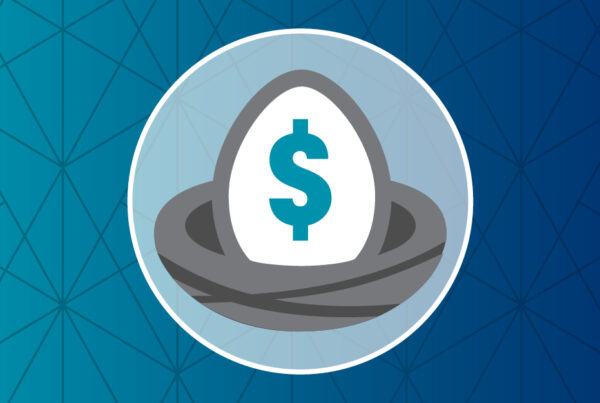Many would have heard about the government’s plan to impose an extra 15% tax on superannuation balances over $3 million from 1 July 2025. This announcement has certainly dominated the news headlines and has led to a national debate about the fairness of the tax concessions in the superannuation system.
If the aim is to ensure the superannuation system is fair and equitable for all Australians, the policy details prove that this proposal is far from it, even for people with high superannuation balances. This article summarizes the top six issues that you may not know about the newly proposed tax, and how it can impact you.
1. You will pay tax on assets that have not been soldPut simply, the extra 15% tax is unrelated to the actual taxable income generated by your fund. Rather, it is a tax on earnings or increases in account balances over $3 million and will be based on the difference in your balance of all your superannuation funds from the start to the end of each year, after adjusting for contributions in and payments out of your fund. This means any growth in your superannuation balance will include anything that causes your account balance to go up. This may include things such as interest, dividends, rent, and capital gains on assets that have been sold, including any notional or ‘unrealised’ gains on assets that increase in value, even if your fund hasn’t sold them. This means that you will have to pay tax on a capital gain for an asset that has not been ‘realised’ or sold. Meanwhile capital gains tax will still apply when that asset is sold.For example, assume your superannuation fund owns a property and your balance grew from $3 million at 30 June 2025 to $4 million at 30 June 2026. Your earnings for the extra tax would consequently be $1 million. Although you will pay tax on any rental income your fund receives from the property, you will also be liable to pay tax on a proportion of earnings above $3 million. In this example, the proportion would be 25%. This means the extra tax you would have to pay on the $1 million of earnings under this new proposal would be $37,500 (($1 million x 25%) x 15% new tax) even though your fund has not sold the property!This issue has caused the most angst as this new tax is a fundamental shift from the way the existing Australian tax system works. The current tax regime in Australia only taxes capital gains when assets are realised and sold for more than their cost base.A further risk is that if this new tax is legislated and therefore become a precedent, the government may apply the same approach to assets held by other entities, such as assets you may own in your own name, assets held in companies or trust structures, etc.2. The new tax is a form of double taxationThe proposal is essentially a form of double taxation on the same asset, which is grossly unfair. That is, you will pay extra tax every year on the proportion of your balance that exceeds $3 million (assuming your balance continues to grow every year) and then pay tax again on the actual capital gain when the asset is eventually sold.3. No refund of tax paid if your balance drops to below $3 millionAlthough the proposal allows individuals to carry forward any negative earnings/losses to offset against the new tax in a future year’s tax bill, some individuals may never recoup the tax they have previously paid on unrealised gains if their account balance does not exceed $3 million again.For example, if we look at what happened over the past two years, many superannuation funds in 2021 experienced large gains followed by a huge year of losses in 2022. Had this proposal been in place for the past two years, there would be many individuals who would be disadvantaged due to the peak and the fall of the market. That is, such individuals would not receive a refund of tax previously paid when a decrease occurs in a future subsequent year. This means individuals will have to wait for their superannuation balance to recover before they can use the pre-payment of tax they have paid on unrealised gains.But some individuals may never experience the peak again and won’t see their balance exceed $3 million because of volatile market conditions or because they are in retirement phase and are drawing down their balance to meet their living expenses. In these cases, individuals will have paid tax on capital gains that their fund has never received and worse still, they will not be able to get this money back.It is only fair that if individuals are going to pay tax on unrealised gains, they should receive a credit or a refund of the tax they have already paid rather than carry forward the loss.4. Cashflow and liquidity issues for volatile and illiquid assetsWhile the new tax will apply to both SMSFs and APRA-regulated funds, the inclusion of unrealised capital gains will have a greater impact on SMSFs with exposure to direct property assets. In particular, farmers and small business owners who have legitimately contributed their farms or business properties to their SMSF may struggle to meet this new tax impost if their fund has cashflow issues or if members have little to no wealth outside of superannuation to pay the tax. As lumpy assets generally cannot be partly sold to pay this new tax, restructuring such assets to generate cashflow may require such properties to be sold which may cause business disruption, impact the member’s livelihood, and lead to substantial transaction costs. Further, forced restructures/disposals may occur when the market is in a downturn and therefore the full, real value of the asset may not be realised.As such, individuals who are asset-rich but cash-poor will be impacted greatly as they will need to find the cashflow to pay the new tax in any given year even though there has been no actual realisation of the asset.5. All accounts are included in the $3 million thresholdAs the new tax is based on an individual’s total superannuation balance (TSB), it will impact more people as an individual’s TSB includes all of their superannuation accounts. This includes accumulation and pension accounts and all superannuation funds you may have (such as your SMSF and any APRA-regulated superannuation funds you may have). The proposal also includes certain amounts as part of your superannuation balance which will unfairly impact certain people, such as SMSF members who use debt via a limited recourse borrowing arrangements (LRBA) to purchase assets, such as property. Currently, certain LRBAs can be included in your superannuation balance, which may push you over the $3 million threshold, resulting in extra tax on a loan amount!Similarly, individuals who inherit a death benefit pension from their spouse or their parent may also be impacted. Say you and your spouse both have balances of less than $3 million each. The moment you inherit your spouse’s superannuation as a pension will mean your balance will increase. This may cause someone who never expected to be included in this measure to be subject to the new tax.6. The $3 million threshold is not indexedThe lack of indexation of the $3 million threshold will capture more people over time through bracket creep and will therefore be worth far less in future dollars under various assumptions. Although the proposal is expected to impact 80,000 people today, it is estimated that around 500,000* Australian taxpayers will breach the threshold in their life, where approximately one-third of these superannuation fund members are now under 30.Further, the long-term impact of the $3 million threshold not being indexed to inflation will lead to intergenerational inequity between the different generations over time. Where to from here?The measure is due to start from 1 July 2025, so superannuation funds and individuals still have time to consider their options.Remember, this measure is still a proposal and must be passed to become law. So don’t rush to remove benefits below the $3 million threshold just yet as once amounts have been withdrawn from superannuation, it’s hard to get them back in.If we do need to see the tax settings change for people with larger balances, many industry experts have already proposed alternative options for a fairer superannuation system without all of the issues that come along with the government’s proposed model. Let’s hope the government considers the feedback and comments from all stakeholders during the consultation process and that we end up with a solution that is simple, equitable and fair for everyone involved.At the end of the day, Australians must have confidence in the stability of the superannuation system and that major changes such as this will not be unexpectedly thrust upon them. This will allow individuals to better plan their retirement strategy knowing the rules won’t change over the short or long term.




